
Passiflora incarnata, commonly known as maypop, purple passionflower, true passionflower, wild apricot, and wild passion vine, is a fast-growing perennial vine with climbing or trailing stems. A member of the passionflower genus Passiflora, the maypop has large, intricate flowers with prominent styles and stamens. One of the hardiest species of passionflower, it is both found as a wildflower in the southern United States and in cultivation for its fruit and striking bluish purple blooms.

Clystea is a genus of moths in the subfamily Arctiinae. The genus was described by Watson in 1980.
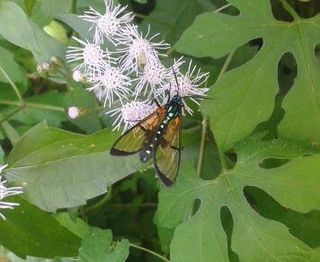
Trichura is a genus of moths in the subfamily Arctiinae erected by Jacob Hübner in 1819.

Virbia is a genus of tiger moths in the family Erebidae. The genus was erected by Francis Walker in 1854.
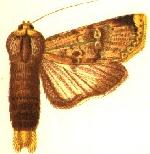
Acanthodica is a genus of moths of the family Noctuidae. The genus was erected by William Schaus in 1894.

Getta baetifica is a moth of the family Notodontidae first described by Herbert Druce in 1898. It is endemic to the western slopes of the Andes in Colombia and Ecuador.

Josia is a genus of moths of the family Notodontidae erected by Jacob Hübner in 1819.

Josia aurifusa is a moth of the family Notodontidae. It is endemic to Venezuela.
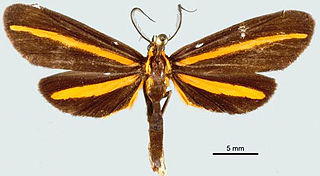
Josia fustula is a moth of the family Notodontidae. It is found on the Pacific slope of the Andes in Ecuador and perhaps also Colombia and Peru.

Josia gigantea is a moth of the family Notodontidae first described by Herbert Druce in 1885. It is found from southern Mexico to Colombia.

Josia insincera is a moth of the family Notodontidae first described by Louis Beethoven Prout in 1918. It lives in Venezuela, where larvae are reared on Passiflora biflora.
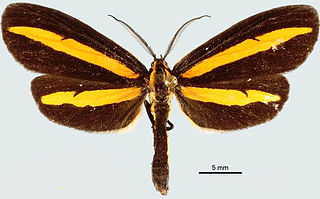
Josia ligata is a moth of the family Notodontidae. It is found in Colombia and Ecuador.
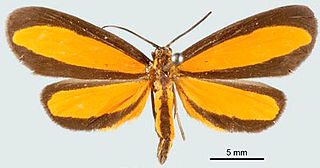
Josia oribia is a moth of the family Notodontidae first described by Herbert Druce in 1885. It is found in the eastern Andean foothills of Peru and Bolivia.
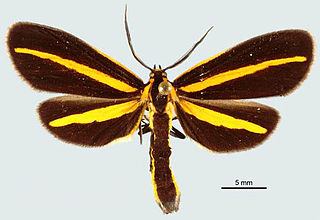
Josia radians is a moth of the family Notodontidae. It is found in Amazonian Colombia and Ecuador.

Josia turgida is a moth of the family Notodontidae. It is found in Venezuela and possibly Colombia.

Lyces fluonia is a moth of the family Notodontidae first described by Herbert Druce in 1885. It is found in the cloud forests of Ecuador and Peru.

Lyces fornax is a moth of the family Notodontidae first described by Herbert Druce in 1885. It is found at mid-elevations on the eastern slopes of the Andes from Ecuador to Bolivia.
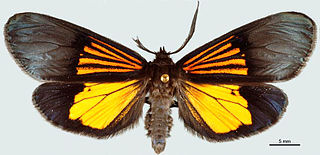
Scea discinota is a moth of the family Notodontidae. It is known almost exclusively from localities close to the city of Mérida in Venezuela. However, there is a single record from the State of Lara. It is engaged in mimicry with Thermidarctia thermidoides.

Erbessa is a genus of moths of the family Notodontidae. It consists of the following species:



















